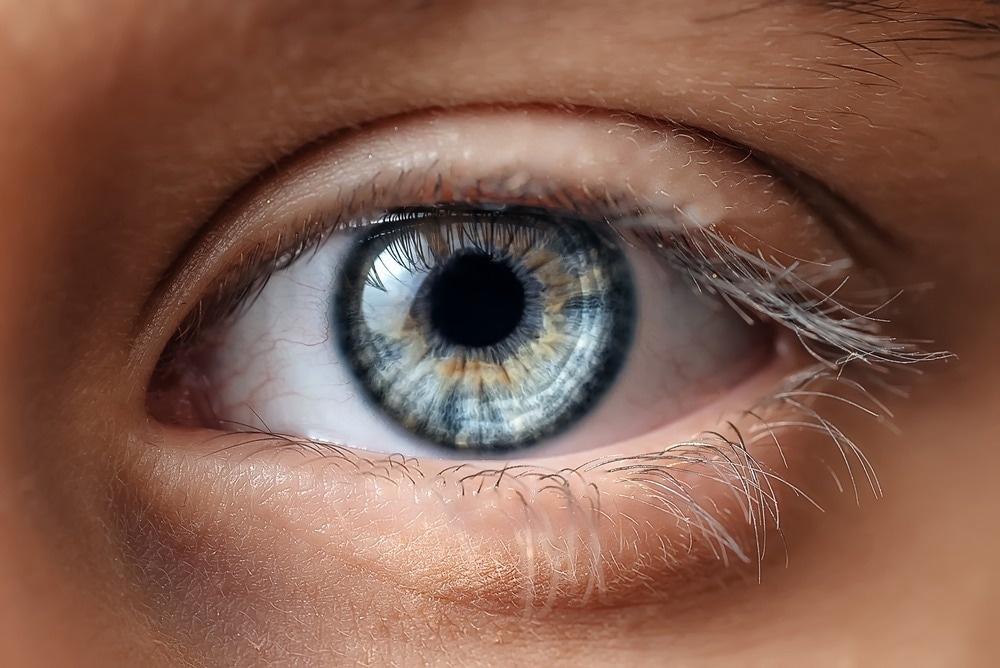According to a recent Northwestern Medicine study published in Nature Communications, aerobic glycolysis, the process by which cells convert glucose into lactate, is essential for eye development in mammals.
 Guillermo Oliver, PhD, the Thomas D. Spies Professor of Lymphatic Metabolism, Director of the Center for Vascular and Developmental Biology in the Feinberg Cardiovascular and Renal Research Institute, was senior author of the study published in Nature Communications. Image Credit: Feinberg School of Medicine
Guillermo Oliver, PhD, the Thomas D. Spies Professor of Lymphatic Metabolism, Director of the Center for Vascular and Developmental Biology in the Feinberg Cardiovascular and Renal Research Institute, was senior author of the study published in Nature Communications. Image Credit: Feinberg School of Medicine
Although the utilization of lactate by retinal cells during cell differentiation is well documented, the precise role that this mechanism plays in the early stages of eye formation was not known.
Guillermo Oliver, PhD, the Thomas D. Spies Professor of Lymphatic Metabolism, Director of the Center for Vascular and Developmental Biology in the Feinberg Cardiovascular and Renal Research Institute, and senior author of the study, believes that the findings advance the field’s understanding of the metabolic pathways underlying organ development.
For a long time, my lab has been interested in developmental biology. In particular, to characterize the molecular and cellular steps regulating early eye morphogenesis. For us, the question was: ‘How do these remarkable and critical sensory organs we have in our face start to form?”
Guillermo Oliver, PhD, Study Senior Author and Thomas D. Spies Professor, Lymphatic Metabolism, Feinberg School of Medicine, Northwestern University
The study’s first author, Nozomu Takata, PhD, a postdoctoral scholar in the Oliver lab, originally tackled this issue by creating organ-like tissues produced in a petri dish from embryonic stem cells called eye organoids.

Image Credit: Edgar Martirosyan/Shutterstock.com
He made the intriguing observation that early mouse ocular progenitors exhibit increased glycolytic activity and lactate generation.
According to the study, normal optic vesicle growth ended after the cultured organoids were given a glycolysis inhibitor, but adding lactate made the organoids continue normal eye morphogenesis, or development.
Takata and his associates then used genome-wide transcriptome and epigenetic analyses with RNA and ChIP sequencing to compare those organoids to controls.
They discovered that lactate addition and glycolysis inhibition controlled the expression of multiple essential and evolutionarily conserved genes needed for early eye development.
Takata removed Glut1 and Ldha, genes known to control glucose transport and lactate generation, from developing mouse embryonic retinas to confirm these findings.
According to the study, the deletion of these genes specifically prevented normal glucose transport in the region responsible for the development of the eye.
What we found was an ATP-independent role of the glycolytic pathway. Lactate, which is a metabolite known as a waste product before, is really doing something cool in eye morphogenesis. That really tells us that this metabolite is a key player in organ morphogenesis and in particular, eye morphogenesis. I see this discovery as having broader implications, as likely also being required in other organs and maybe in regeneration and disease as well.”
Nozomu Takata, PhD, Study First Author and Postdoctoral Fellow, Feinberg School of Medicine, Northwestern University
After making this discovery, Takata stated he intended to carry out further research on the involvement of the glycolytic pathway and metabolism in the development of additional organs using both established and cutting-edge developmental biology technologies, such as mouse genetics and organoids made from stem cells.
According to Oliver, the results could help researchers better grasp the direct role that metabolites might play in controlling gene expression during tumor formation and organ regeneration.
Oliver further added, “Both regeneration and tumorigenesis involve developmental pathways that go awry in some occasions, or you need to reactivate. For many developmental processes, you need very strict transcriptional regulation. A gene is on or off at certain times, and when that goes wrong, that could lead to developmental defects or promote tumorigenesis.”
He concluded, “Now that we know that there are specific metabolites responsible for normal or abnormal gene regulation, this can broaden our thinking on approaches to therapeutic treatments.”
Source:
Journal reference:
Takata, N., et al. (2023). Lactate-dependent transcriptional regulation controls mammalian eye morphogenesis. Nature Communications. doi.org/10.1038/s41467-023-39672-2